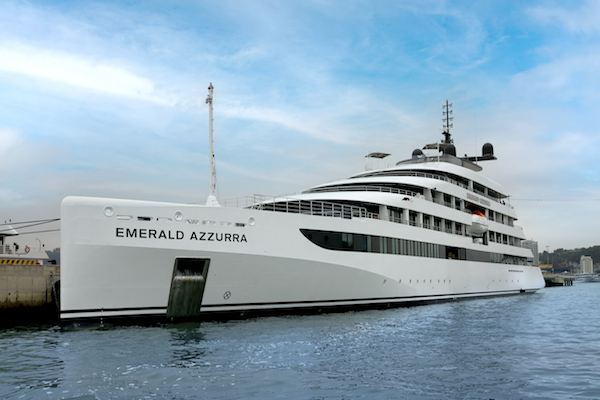JetBlue Downplays Corp. Network in New Profit Strategy
JetBlue executives unveiled a "refocused strategy" during the company's Tuesday earnings call that is designed to increase the carrier's profitability through a renewed focus on leisure operations, a change that already is affecting its network of business travel destinations....

JetBlue executives unveiled a "refocused strategy" during the company's Tuesday earnings call that is designed to increase the carrier's profitability through a renewed focus on leisure operations, a change that already is affecting its network of business travel destinations.
Dubbed JetForward, the plan is built on four pillars: providing reliable and caring service, building the best East Coast leisure network, offering products and perks that customers value, and creating a secure financial future, according to a JetBlue presentation. It aims to provide incremental earnings before interest and taxes of $800 million to $900 million between 2025 and 2027.
Network changes will have the most drastic effect on corporate travel. Throughout, JetBlue has announced it is pulling out of 15 cities and exiting 54 routes. "Every route and station needs to earn its way into our network, and our push for profitability has lessened our patience for underperforming routes," said JetBlue president Marty St. George.
The carrier's "profit engine" is composed of leisure, visiting friends and relatives, and transcontinental routes to and from "core East Coast geographies" including New York, New England, Florida, Puerto Rico and the Caribbean, St. George said. "Many of the changes we've made to our network are driven by the stronger recovery and quicker ramp of leisure travel," he added. "As a result, and specifically in New York, we've shifted capacity out of corporate-focused routes and into leisure and VFR routes."
That doesn't mean the carrier will stop serving corporate customers.
"There's no walking away from the corporate market," St. George said. "The better way to describe it is we're not really designing the network for corporate like we once did. And if you look at some of the changes we've made in New York, some of the routes we pulled, I think it's very consistent with what we've seen as far as a slower recovery of corporate travel in New York."
St. George added that contracted corporate business revenue is up by "high single-digit" percentages compared with a year prior, "so it continues to grow. With the retreat that we have been doing over the last three quarters at LaGuardia, that was a bit of a pleasant surprise for us because those are much higher business-share markets when we flew those."
JetBlue earlier this year announced reduced flights to and from Los Angeles International and LaGuardia airports.
Still, St. George gave the example of JetBlue's departure from the Minneapolis market, and noted that business revenue on the Boston-Minneapolis route was "pretty strong" and "more corporate" at 30 percent share of bookings instead of the historical 20 percent. "But I guess I would say it was not more corporate enough," he said. "So as far as 1,000 flights a day, I don't think it's going to dramatically move that [corporate revenue] number from where it is now."
Aircraft Challenges
The U.S. Federal Aviation Administration in 2023 and 2024 issued directives requiring planes with certain Pratt & Whitney GTF engines grounded until they can be inspected, a situation that "challenge[s] our ability to plan our business over the long term," JetBlue CEO Joanna Geraghty said. "We now expect aircraft on the ground to significantly increase in 2025."
Because the carrier "can't afford to continue taking delivery of costly new aircraft that may need to be parked due to engine availability issues," JetBlue and Airbus have come to an agreement in which JetBlue would defer delivery of 44 of its A321neo aircraft—the part of the fleet most affected by the Pratt & Whitney GTF issues—to 2030 and beyond, as opposed to receiving deliveries scheduled for 2025 to 2029. That will reduce capital expenditures by approximately $3 billion over the next five years, JetBlue CFO Ursula Hurley said.
With the average number of grounded aircraft in 2025 projected to be in the mid- to high teens "with greater uncertainty in 2026 and beyond," it will drive flat year-over-year capacity in 2025, Hurley added. And to reach flat growth, "we'll need to continue investing to extend the lives of our [Airbus] A320 fleet. While it comes at a cost to buy out leases and extend the lives of aircraft, the return profile is more attractive than investing in new aircraft."
JetBlue Q2 Metrics
JetBlue reported second-quarter passenger revenue of nearly $2.3 billion, down 7.9 percent year over year. Total revenue was down to $2.4 billion from $2.6 billion one year prior. The carrier's net income for the quarter was $25 million, down from the $138 million reported in Q2 2023.
Second-quarter capacity decreased 2.7 percent compared with last year. The average fuel price was $2.87 per gallon.
Third-quarter guidance includes a year-over-year decline in revenue of 1.5 percent to 5.5 percent, with full-year revenue projected to be down 4 percent to 6 percent. JetBlue plans for third-quarter capacity to be down 3 percent to 6 percent year over year, with full-year 2024 capacity down 2.5 percent to 5 percent.
The average third-quarter fuel price is projected to be $2.82 to $2.97 per gallon, with full-year costs estimated at $2.80 to $3 per gallon.

 Lynk
Lynk 































